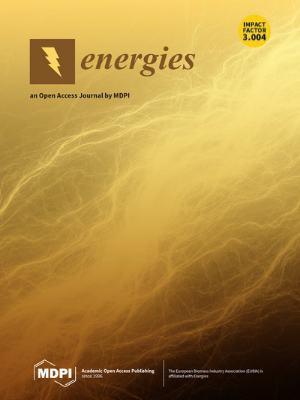A Critical Review of the Environmental Performance of Bifacial Photovoltaic Panels
IF 3.2
4区 工程技术
Q3 ENERGY & FUELS
引用次数: 0
Abstract
Bifacial photovoltaic (BPV) panels represent one of the main solar technologies that will be used in the near future for renewable energy production, with a foreseen market share in 2030 of 70% among all the photovoltaic (PV) technologies. Compared to monofacial panels, bifaciality can ensure a gain in energy production per unit panel area together with a competitive cost. However, it is of paramount importance to identify whether there is also an environmental benefit when adopting bifacial technologies as opposed to traditional monofacial ones. To obtain a proper insight into the environmental impact, this paper reviews the Life Cycle Assessment (LCA) studies of bifacial solar panels, identifying the most crucial processes and materials that raise environmental burdens. The analysis also contributes to determining whether the major aspects that influence energy production in real operation scenarios and, most of all, that can ensure the gain associated with bifaciality, are considered and how these can further affect the overall environmental impacts. In this sense, it was found that the installation parameters like the mounting structure, or the choice of ground material to raise the albedo as well as the diffuse irradiation that hits the rear surface of thepanel, are commonly not considered during LCA analysis. However, none of the analyzed studies address the issue in a comprehensive way, hampering an effective comparison between both the different works and traditional monofacial PV panels. Recommendations for future LCAs are finally proposed.双面光伏电池板环境性能的严格审查
双面光伏(BPV)电池板是近期用于可再生能源生产的主要太阳能技术之一,预计 2030 年在所有光伏(PV)技术中的市场份额将达到 70%。与单面太阳能电池板相比,双面太阳能电池板可确保单位面积的发电量增加,且成本具有竞争力。然而,与传统的单面技术相比,采用双面技术是否也能带来环境效益,这一点至关重要。为了深入了解双面太阳能电池板对环境的影响,本文回顾了双面太阳能电池板的生命周期评估(LCA)研究,确定了造成环境负担的最关键工序和材料。分析还有助于确定是否考虑了在实际操作情况下影响能源生产的主要方面,最重要的是,是否考虑了能够确保与双面性相关的收益的主要方面,以及这些方面如何进一步影响整体环境影响。在这个意义上,我们发现,在生命周期评估分析过程中,安装参数,如安装结构,或选择地面材料以提高反照率,以及照射到面板后表面的漫射辐照,通常都没有被考虑在内。然而,所分析的研究都没有全面地解决这个问题,这就妨碍了对不同作品和传统的单面光伏板进行有效比较。最后对未来的生命周期评估提出了建议。
本文章由计算机程序翻译,如有差异,请以英文原文为准。
求助全文
约1分钟内获得全文
求助全文
来源期刊

Energies
ENERGY & FUELS-
CiteScore
6.20
自引率
21.90%
发文量
8045
审稿时长
1.9 months
期刊介绍:
Energies (ISSN 1996-1073) is an open access journal of related scientific research, technology development and policy and management studies. It publishes reviews, regular research papers, and communications. Our aim is to encourage scientists to publish their experimental and theoretical results in as much detail as possible. There is no restriction on the length of the papers. The full experimental details must be provided so that the results can be reproduced.
 求助内容:
求助内容: 应助结果提醒方式:
应助结果提醒方式:


